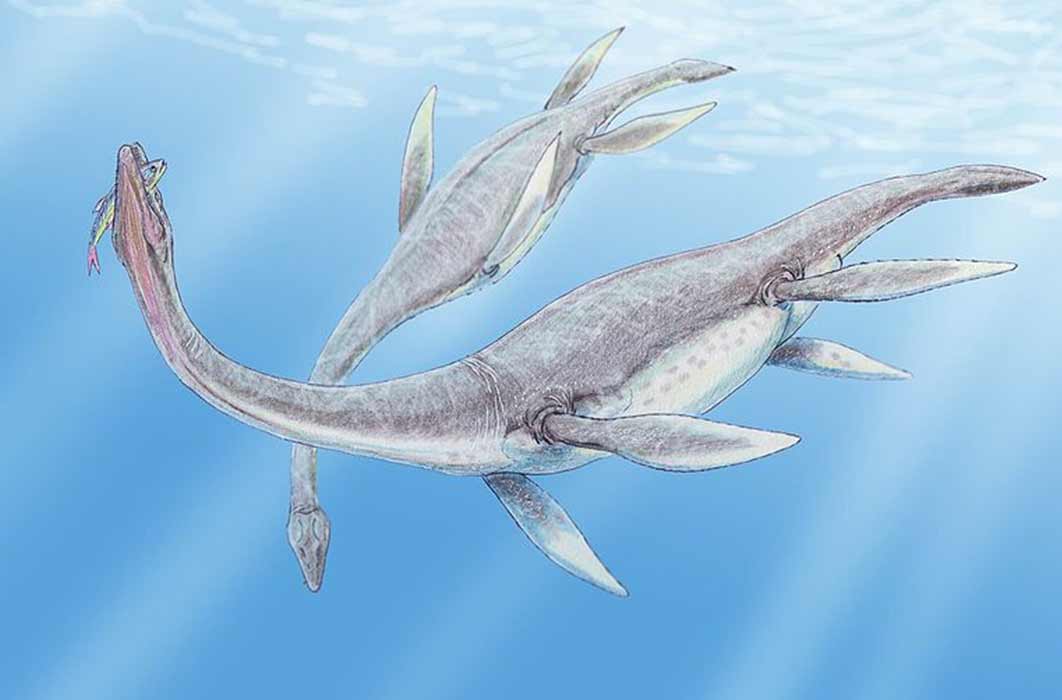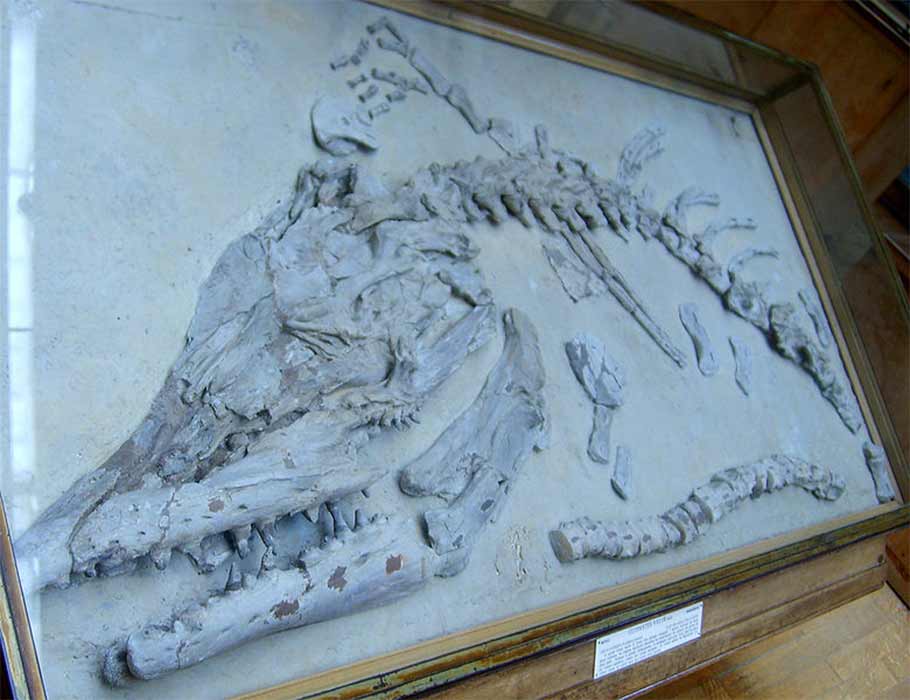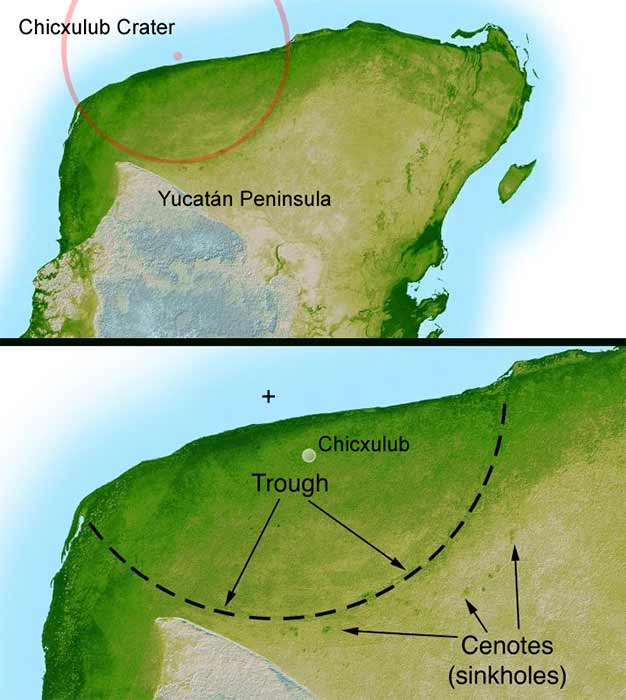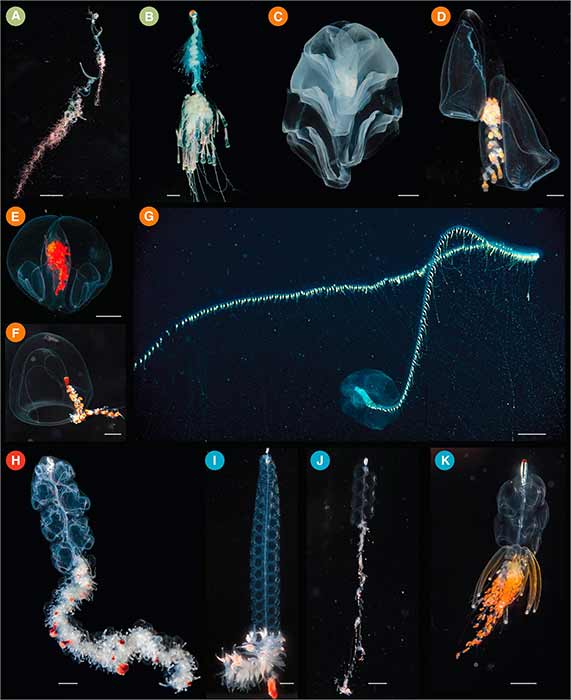
Dragon Sharks, Fish Flippers And Other Real Life Monsters Of The Primordial Soup
From the human perspective oceans appear endless and unchanging, but in reality they are in a constant state of flux, continuously evolving over vast periods of time. Many modern humans seem oblivious to the fact that their way-back ancestors crawled from the oceans and that for three billion years the majority of the planet's life was water locked. In the beginning, microscopic life forms fought for resources and latterly the world’s seas became populated with a bizarre range of creatures, but when the ocean changed too rapidly for species to respond, mass extinctions occurred. Considering this has occurred at least five times it is not really a question of could this happen again, but when will it happen next?

Clidastes velox fósil, Museo Nacional de Historia Natural de Francia, París, France. (FunkMonk/ CC BY-SA 3.0)
All adults remember being exposed to their first books and pictures of dinosaurs and giant sea creatures, and the deep-rooted awe they inspired in children’s imaginations, but what was not so popular were the smaller forerunners, the ancient life forms that cut their way between and around the giant predators of the seas. Donning virtual diving helmets and following the evolutionary chains of ancient sea creatures, both great and small, through the published research of scientists, still captures the imagination.
Recent Realigning The Extinction Of The Dinosaurs
In a June 2021 research paper, published in the journal Nature Communications Dr Fabien Condamine, from the University of Montpellier, and coauthor Professor Mike Benton from University of Bristol, reveal that about 76 million years ago, 10 million years before the famous asteroid collision in Chicxulub in modern Mexico that wiped out the dinosaurs, “the giant lizards were already on the way out.” They conclude the reason for this decline was “global cooling, herbivore loss and dinosaurs' failure to adapt.” Until recently most scientists would have agreed that the Chicxulub impact crater caused the Cretatious-Tertiary extinction 65 million years ago, but it has now been established that while this event killed off the last of the dinosaurs, they were already on their way out for much more earthly reasons.

Modified NASA image of the Chicxulub impact crater with scale and labels to increase clarity by David Fuchs. (Public Domain)
This game-changing new study analyzed 1,600 fossils from six dinosaur family groups that were all evolving and expanding throughout the Cretaceous period between 145 to 66 million years ago: Ankylosauridae, Ceratopsidae, Hadrosauridae, Dromaeosauridae, Troodontidae and Tyrannosauridae. Relatively suddenly, about 76 million years ago, a period of global cooling caused the earth's temperature to fall by 7°C (12.6°F) leading to a rapid reduction in the number of species and a sharp loss of herbivores. It was these two key factors that sparked the eventual extinction of all dinosaurs, and it was not a space rock, as is commonly believed. That was just a nail in the proverbial coffin, but it did hyper-heat and terraform earth, ultimately, causing the ideal conditions from which much later humans would evolve. For millions of years giant reptiles dominated the earth and the ancient seas were filled with top predators as big as busses, but so too was the primordial soup thick with smaller hunters, and microscopic life forms.

Siphonophorae is an ancient order of Hydrozoans, a class of marine organisms belonging to the phylum Cnidaria, and according to the World Register of Marine Species the order contains 175 species. (sciencedirect/ CC BY-SA 4.0)




